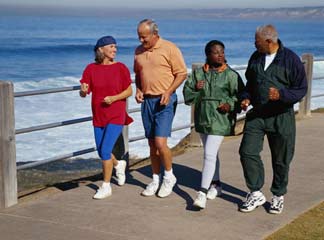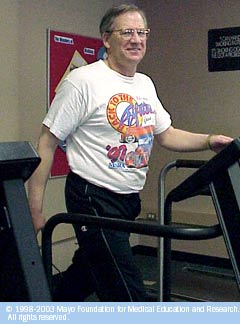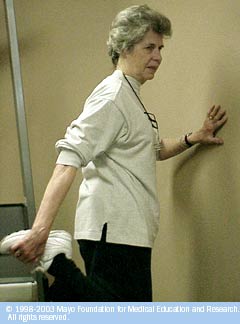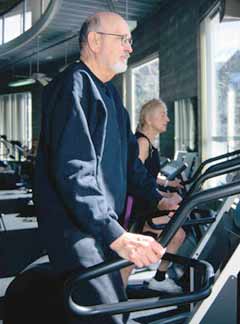|
A second chance If you've had a heart attack, other heart condition or heart surgery, cardiac rehabilitation may help get you back to leading as active and productive a life as possible. Through rehab, you can regain strength, vitality and confidence, and you may feel better in many ways than you did before. Cardiac rehabilitation is a medically supervised exercise and counseling program designed to help overcome some of the physical complications of heart disease, limit your risk of developing additional heart trouble, help you return to an active social or work schedule, and improve your psychological well-being. It has four main components:
When heart problems struck Jonathan Stee, Denise Kinlaw and Joanne Pieper, they were leading very different lives from the ones they're forging today. Poor eating habits, smoking, physical challenges, a waning inner spirit, and social isolation contributed to their unhealthy lifestyles. But their heart problems afforded an unexpected — if initially unwelcome — opportunity to make a difference in their own lives. Come along and see how they did it.
Lifestyle changes
In the wee hours of the morning on St. Patrick's Day, 2001, Jonathan Stee awoke in discomfort. Thinking it was indigestion, he went back to sleep. But at work later that day, he felt tightness and pain in his chest, and this time he went to the hospital. The diagnosis: a mild heart attack. Stee joined a cardiac rehabilitation program and vowed to overhaul his lifestyle. "My life has changed considerably," says Stee, 50. "It was a huge wake-up call." He quit smoking the day of the heart attack, and through the cardiac rehab program, he began exercising and changed his diet. "When I think about having a cigarette, I think about the alternative and that's being on the wrong side of the green grass," he says. Stee has cut much of the fat from his diet, has added healthier foods and eats smaller portions. And for the first time in his adult life, he exercises regularly, walking nearly every day for an hour. The dividends have been huge, he says. Both he and his wife say he looks and feels better than he has in years. "I'm getting more exercise, I'm eating better foods, I'm dropping a little weight," he says. "This has been a very positive experience."
|



